Cycling for Enthusiasts and Hobbyists
Embarking on a cycling journey can be both exciting and rewarding, offering countless benefits for your health, fitness, and overall well-being. As you begin to explore the world of cycling, it’s important to familiarize yourself with various aspects of the sport, from choosing the right bike to mastering essential techniques and establishing personal goals. This comprehensive guide will provide you with valuable insights, tips, and resources to help you become a confident and accomplished cyclist.
Choosing the Right Bike
Title: Choosing the Right Bike for Your Cycling Journey
Introduction:
Cycling is a versatile activity, suitable for enthusiasts and hobbyists alike. Whether you’re considering taking up cycling for fitness, exploring the great outdoors, or simply enjoying leisurely rides, it all begins with finding the right bike. This guide will help you understand the different types of bikes available and the importance of selecting the optimal size and fit to enhance your comfort and performance.
1. Assess Your Needs:
Before diving into bike options, take some time to consider your goals and the types of terrain you’ll primarily be cycling on. This will help you better understand the ideal bike for you.
2. Types of Bikes:
There are three main categories of bikes, each designed for specific purposes and terrains:
- Road Bikes:
Lightweight, with slim tires and drop handlebars, road bikes are ideal for fast, efficient riding on paved surfaces. They are suitable for racing, fitness, and endurance activities. - Mountain Bikes:
Durable and versatile, mountain bikes are built for off-road riding, with wide, knobby tires and suspension systems to handle rough terrain. They can also perform well on pavement, making them suitable for riders looking for adaptability. - Hybrid Bikes:
A combination of road and mountain bikes, hybrid bikes are perfect for riders wanting versatility for both on- and off-road rides. With wider tires than road bikes, and flat handlebars for a more comfortable riding position, hybrids are great for casual, recreational riding and commuting.
3. Consider Additional Subtypes:
While the above are the main categories, there are also specialty bikes designed to cater to specific rider needs, such as touring bikes, urban bikes, electric bikes, and others. Conduct further research to find more tailored options if needed.
4. Understand Bike Sizing:
Choosing the right-sized bike is crucial for comfort, performance, and injury prevention. Generally, bike sizing is based on your height and inseam length. Both the frame size and seat height should be taken into account.
- Frame Size:
Each type of bike has a specific method for measuring frame size. Most manufacturers provide sizing charts on their websites to help you find the right fit. Any bike shop can also assist in finding the appropriate measurements. - Seat Height:
Adjust your seat height to find the most comfortable position for your legs. When sitting on the bike, your heel should touch the pedal at its lowest point, with a slight bend in your knee.
5. Test Rides and Professional Fitting:
Visit your local bike shop to test ride different types of bikes and gather expert opinions. Many shops also offer professional fitting services to ensure a proper setup tailored to your unique proportions and preferences.
Conclusion:
Choosing the right bike may seem daunting, but understanding the different types and the importance of size and fit will make the process easier. Take the time to assess your riding goals, research your options, and visit local bike shops for test rides and expert advice. Happy cycling!

Basic Bike Maintenance
Basic Bike Maintenance for Enthusiasts and Hobbyists
1. Cleaning Your Bike
- Rinse your bike with a hose or bucket of water to remove loose dirt and debris.
- Fill a bucket with warm water and a mild detergent (such as dish soap).
- Use a large sponge or soft brush to thoroughly wash each component of your bike. This may include: the frame, tires, handlebars, saddle, wheels, and any other visible parts.
- Rinse your bike again to remove the soap and dirt.
- Dry your bike with a clean towel or allow it to air dry.
- It’s essential to keep your chain lubricated, so be sure to apply chain lubricant after cleaning.
2. Lubricating Your Bike
- Choose the appropriate lubricant for your bike (either wet or dry) based on your riding conditions.
- Apply a few drops of lubricant to the following parts: the chain, derailleur pivot points, brake and shift levers, and cable housing.
- Wipe off any excess lubricant with a clean, dry cloth to prevent the accumulation of dirt and grime.
3. Tire Pressure Checks
- Locate the recommended tire pressure range on the sidewall of your tire (typically measured in PSI).
- Use a bike pump with a pressure gauge to inflate your tires. Ensure you have the correct valve type (Presta or Schrader) for your pump.
- Check your tire pressure regularly, as it can fluctuate with temperature and usage.
4. Essential Tools and Supplies
- Bike pump with a pressure gauge
- Spare tubes and patch kit
- Chain lubricant and cleaning supplies (soap, sponge, brushes, and cloth)
- Allen wrenches (metric)
- Tire levers
- Adjustable wrench
- Screwdriver set (flathead and Phillips)
- Chain tool (if you need to replace a chain)
By following these basic bike maintenance tips, you’ll keep your bike in excellent condition and improve your cycling experience. Regularly cleaning, lubricating, and maintaining proper tire pressure will extend the life of your bike and ensure a safe and enjoyable ride. Make sure you have the essential tools and supplies on hand to perform these tasks and address any other basic repairs that may be needed.
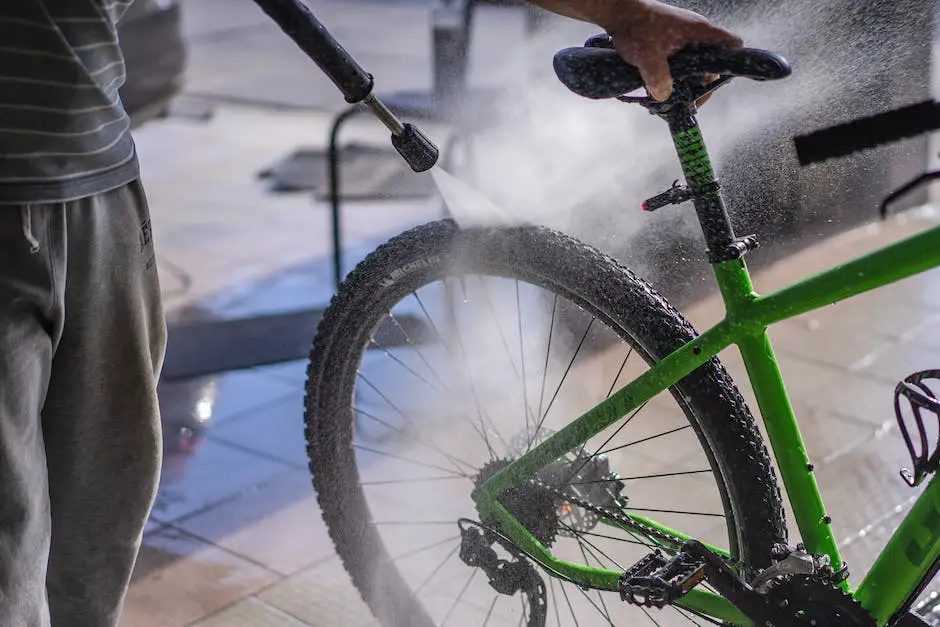
Cycling Safety and Road Rules
Title: Cycling Safety and Road Rules for Enthusiasts
Introduction:
Cycling is an excellent way to stay active, enjoy the outdoors, and reduce your carbon footprint. However, it’s essential to observe cycling safety precautions and follow road rules to prevent accidents and ensure a safe riding experience. This guide covers essential cycling safety tips and road rules to help enthusiasts and hobbyists ride confidently and safely in different environments.
1. Wear a helmet:
- – Always wear a helmet that fits snugly and comfortably on your head.
- – Make sure the helmet meets the American National Standards Institute (ANSI) or the Snell Memorial Foundation’s safety standards.
- – Check for any visible damages or cracks before use, and replace your helmet after a significant impact, even if there are no visible signs of damage.
- – Adjust the chinstrap so that it is tight enough to keep the helmet in place without causing discomfort.
2. Use lights and reflective clothing:
- – Equip your bike with white front lights and red rear lights that are visible from at least 500 feet away.
- – Consider using additional lights on your helmet or torso for better visibility.
- – Wear brightly colored or reflective clothing, especially during dawn, dusk, or nighttime riding, to increase your visibility to other road users.
- – Attach reflectors to your bike’s spokes and pedals for added visibility.
3. Inspect your bike regularly:
- – Perform regular maintenance checks on your bike, ensuring that the brakes, gears, tires, and chain are in good working condition.
- – Replace worn-out or damaged parts as needed.
- – Ensure that your handlebars and saddle are correctly adjusted for your height and riding style.
4. Follow road rules:
- – Obey all traffic signals, signs, and lane markings.
- – Always ride in the same direction as traffic.
- – Use designated bike lanes or bike-friendly routes whenever possible.
- – Yield to pedestrians, and give them enough space while passing.
- – Avoid cycling on sidewalks or pedestrian walkways, unless it’s specifically allowed or necessary for safety reasons.
5. Use appropriate hand signals:
- – Use hand signals to communicate with other road users when turning or changing lanes.
- – Signal well in advance of your intended action to give other road users enough time to react.
- – Regularly practice hand signals to build muscle memory and improve signal visibility.
6. Maintain a safe distance from vehicles and other cyclists:
- – Keep a safe distance from parked vehicles to avoid collisions with opening doors or sudden movements.
- – Allow for at least three feet of distance between you and a passing vehicle.
- – Leave enough space between you and other cyclists, maintaining a distance of at least one bike length.
7. Anticipate road hazards:
- – Keep an eye out for potholes, debris, wet leaves, or other hazards on the road.
- – Slow down and exercise caution when approaching an obstacle, especially during poor weather conditions.
- – Stay vigilant and maintain situational awareness, anticipating potential risks such as vehicles entering or exiting driveways, pedestrians crossing the road, or car doors opening unexpectedly.
8. Practice defensive cycling:
- – Assume that other road users may not see you or be fully aware of your presence.
- – Ride predictably, maintaining a consistent speed and avoiding sudden movements.
- – Be prepared to react quickly to potential dangers, maintaining a firm grip on the handlebars and keeping your fingers near the brake levers.
9. Properly secure your bike:
- – Lock your bike securely, using a high-quality lock, and regularly check your lock for signs of wear or tampering.
- – Use a secondary lock or deterrent, such as a cable lock, to further secure your bike’s wheels and frame.
- – Park your bike in well-lit, high-traffic areas, or use designated bike parking facilities when available.
Conclusion:
By following these cycling safety guidelines and road rules, enthusiasts and hobbyists can confidently and safely take part in the joys of cycling. Remember that consistent practice and a proactive approach to safety will ensure a more enjoyable and secure riding experience. Happy cycling!”
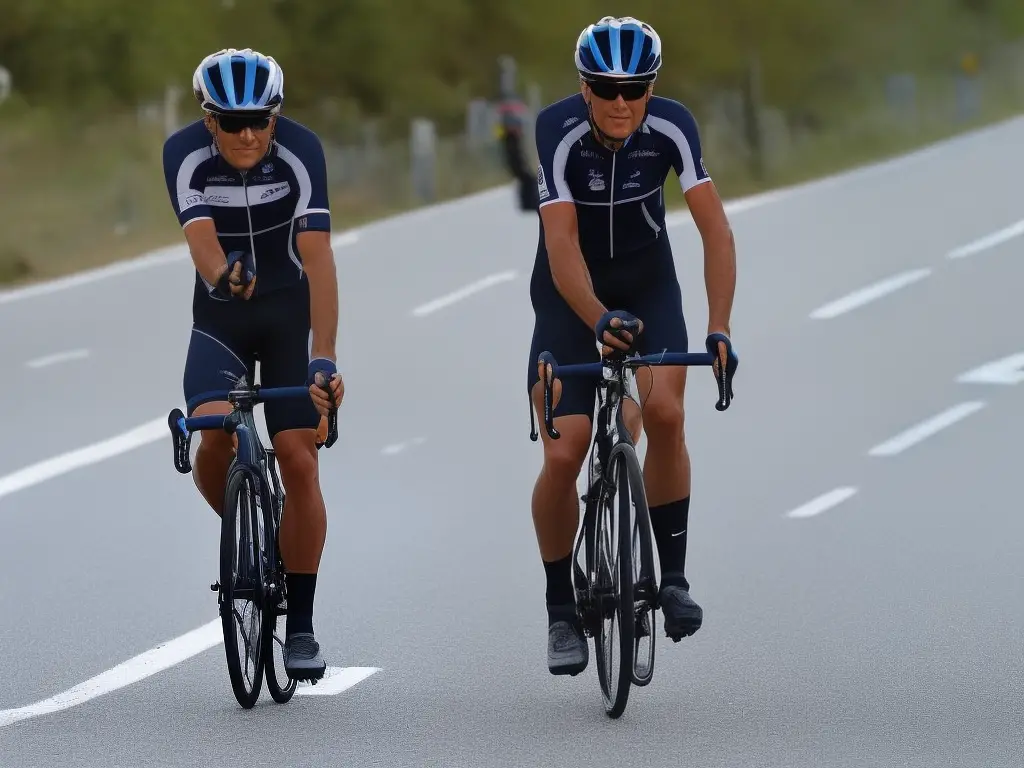
Cycling Techniques and Form
Title: Cycling Techniques and Form: A Guide for Enthusiasts and Hobbyists
Introduction:
Getting back into cycling can be an exhilarating and rewarding experience! To ensure you have an efficient, comfortable, and safe ride, it’s essential to learn and apply proper cycling techniques and posture. This guide will provide an overview of key components such as cadence, gear shifting, hill climbing, and descending.
1. Proper Cycling Posture:
-
a) Upper body: Hold your handlebars lightly and keep your elbows slightly bent. This will help absorb vibrations and allow for easy steering. Keep your back relatively flat, with a slight bend in the lower back and engage your core muscles to support your upper body.
-
b) Lower body: Adjust your saddle height so that you have a slight bend in your knee at the bottom of your downstroke. This will help prevent knee strain and improve your pedaling efficiency. Drop your heels at the bottom of each pedal stroke to engage your glutes and hamstrings.
2. Cadence:
-
a) Importance: Cadence is the number of revolutions your feet make per minute while cycling. A proper cadence helps reduce muscle fatigue, reduces stress on your joints, and allows for a more efficient transfer of energy to your bike.
-
b) Finding the right cadence: Aim for a cadence of 80-100 revolutions per minute (RPM). Beginners may start at a lower RPM, around 60-70, and gradually increase as they become more comfortable. You can use a cadence sensor or count pedal strokes for 15 seconds and multiply by 4 to calculate RPM.
3. Gear Shifting:
-
a) Purpose: Gears help balance speed and resistance, allowing you to maintain your ideal cadence regardless of terrain. Shifting to a lower gear (smaller chainring) will make pedaling easier, while shifting to a higher gear (larger chainring) will make it harder.
-
b) Technique: Make sure to keep pedaling while shifting gears and anticipate when to shift. For example, before approaching a hill, shift to a lower gear to maintain your cadence without straining your muscles. Familiarize yourself with your bike’s gears and how they affect your ride.
4. Hill Climbing:
-
a) Preparation: Before approaching a hill, shift to a lower gear to make pedaling more manageable.
-
b) Technique: Maintain a steady cadence and don’t rush into a steep climb; this will help preserve your energy. Lean slightly forward and continue to engage your core. If necessary, stand on the pedals to provide extra force, remembering to keep a smooth pedal stroke and an even weight distribution.
5. Descending:
-
a) Safety first: Make sure your brakes are in good working order and familiarize yourself with their function and sensitivity.
-
b) Technique: Stay relaxed and keep a firm grip on the handlebars. Control your speed by gradually applying the brakes as needed, rather than sudden hard braking, to avoid skidding or losing control. Look ahead and anticipate upcoming turns, leaning your body into the turn while keeping your weight centered over the bike.
Conclusion:
Practicing proper cycling techniques and form will make your return to cycling more enjoyable and safe. As with any skill, consistent practice and gradually increasing your rides’ intensity and duration will help you become more comfortable and confident on your bike. Happy cycling!

Photo by fonsheijnsbroek_amsterdam_photos on Unsplash
Building Fitness and Stamina
Building Fitness and Stamina: Developing a Training Plan for Cycling
Step 1: Establish your goals
Before you begin, it’s essential to establish clear goals for your cycling training. Determine what level of fitness you wish to achieve, how much endurance you want to build, and whether you’d like to participate in competitive events or simply cycle for enjoyment. Having clearly defined goals will help you stay focused and motivated throughout your training.
Step 2: Assess your current fitness level
Evaluate your current fitness level by going for a bike ride at a comfortable pace and measuring how far you can cycle without feeling overly tired or strained. This will provide you with a baseline to measure your progress against over time. Be honest with yourself about your physical abilities, and don’t try to push yourself too hard in the beginning.
Step 3: Create a weekly training schedule
Develop a weekly training schedule that includes a mix of different activities and varying levels of intensity. As a beginner, you should aim to cycle for about three to four days per week, gradually increasing the frequency and intensity of your rides as you build your stamina. Your weekly training schedule should include:
- At least one long, steady ride per week to improve endurance (e.g., a ride of 90 minutes or more at a moderate pace)
- One or two shorter rides with intervals of high intensity (e.g., 30-60 minutes of alternating between hard effort and easy recovery periods)
- One or two days of cross-training activities like swimming, running, or strength exercises to develop overall fitness and reduce the risk of injury
- At least one rest day per week for adequate recovery and muscle repair
Step 4: Gradually increase distance and intensity
To build fitness and endurance, it’s essential to progressively increase the distance and intensity of your rides over time. Avoid the temptation to push yourself too hard, too soon. Instead, aim for incremental increases in distance and intensity each week. For example, you may start by cycling 10 miles per ride and gradually increase the distance by about 10% each week.
Step 5: Track your progress
Keep a training journal to record the details of each ride, including distance, duration, intensity, and how you felt during and after the ride. Regularly review your journal to assess your progress and identify areas where you may need to adjust your training plan.
Step 6: Fuel your body properly
In order to support your increased physical activity, it’s essential to fuel your body with proper nutrition. Focus on eating a balanced diet rich in whole grains, lean protein, healthy fats, fruits, and vegetables. Additionally, make sure to stay adequately hydrated by drinking water before, during, and after your rides.
Step 7: Incorporate recovery techniques
Remember to give your body time to recover after each ride. This will help you avoid overtraining and reduce the risk of injury. Some effective recovery techniques include:
- Taking rest days
- Getting adequate sleep
- Incorporating gentle stretching and foam rolling
- Listening to your body and recognizing when you need to take a break
Step 8: Stay motivated and enjoy the journey
Staying motivated throughout your training is key to achieving your goals. Set realistic expectations for yourself, and celebrate your accomplishments along the way. Stay accountable by participating in local group rides or joining an online cycling community. And most importantly, have fun and enjoy the process of building your fitness and stamina through cycling.

Nutrition for Cycling
Introduction
As a cycling enthusiast, it is essential to understand the importance of a well-balanced diet to fuel your activities on the bike. A proper cycling nutrition plan includes proper hydration, pre-ride meals, during the ride nutrition, and post-ride recovery nutrition. This guide will provide you with essential tips on how to get the most out of your rides by properly fueling your body.
1. Importance of Hydration
Staying hydrated is crucial for all athletes, especially cyclists. Dehydration can lead to fatigue, poor performance, and even injury. To ensure you’re adequately hydrated:
- Drink at least 8 to 10 glasses of water daily.
- Drink an additional 16 to 20 ounces of water or an electrolyte-rich sports drink 2 hours before a ride.
- Consume at least 6 to 8 ounces of water or a sports drink for every 15 to 20 minutes during your ride.
- Weigh yourself before and after rides, and replace each pound of lost weight with 16 to 24 ounces of fluid.
2. Pre-Ride Meals
Fueling your body with the proper nutrients before your ride ensures a strong performance on the bike. Follow these guidelines for an ideal pre-ride meal:
- Focus on carbohydrates, which provide quick energy. Aim for whole grains, fruits, and vegetables.
- Include a small amount of lean protein to help maintain steady energy levels and support muscle repair.
- Eat your pre-ride meal 2 to 3 hours before hitting the road, allowing your body enough time to digest and absorb the nutrients.
- Avoid high-fat foods or overly large meals, which can cause digestive discomfort during the ride.
Example pre-ride meal:
- Whole wheat bagel with almond butter and sliced banana
- Yogurt with mixed berries and honey
3. Nutrition During the Ride
Maintaining energy levels throughout your ride is just as important as preparing beforehand. Follow these tips to stay fueled up during your ride:
- Consume 30 to 60 grams of carbohydrates per hour through energy bars, gels, or sports drinks.
- If your ride exceeds 2 hours, include some protein in your mid-ride fuel to help stave off muscle fatigue.
- Don’t forget to continue hydrating with water or sports drinks during your ride.
4. Post-Ride Recovery Nutrition
Post-ride nutrition is essential for restoring glycogen reserves, repairing muscle tissue, and rehydrating your body. To optimize your recovery, follow these guidelines:
- Within 30 minutes of finishing your ride, consume a meal or snack with a 3 to 1 ratio of carbohydrates to protein.
- Rehydrate adequately by continuing to drink water or sports drinks.
- Aim to eat a nutrient-dense, balanced meal within 2 hours of completing your ride.
Example post-ride recovery meal:
- Grilled chicken with quinoa and roasted vegetables
- Chocolate milk or a protein shake
Conclusion
A well-balanced diet is essential for optimal cycling performance and recovery. By following these guidelines for proper hydration, pre-ride meals, during ride nutrition, and post-ride recovery, you’ll be better equipped to reach your goals and enjoy your rides. Happy cycling!
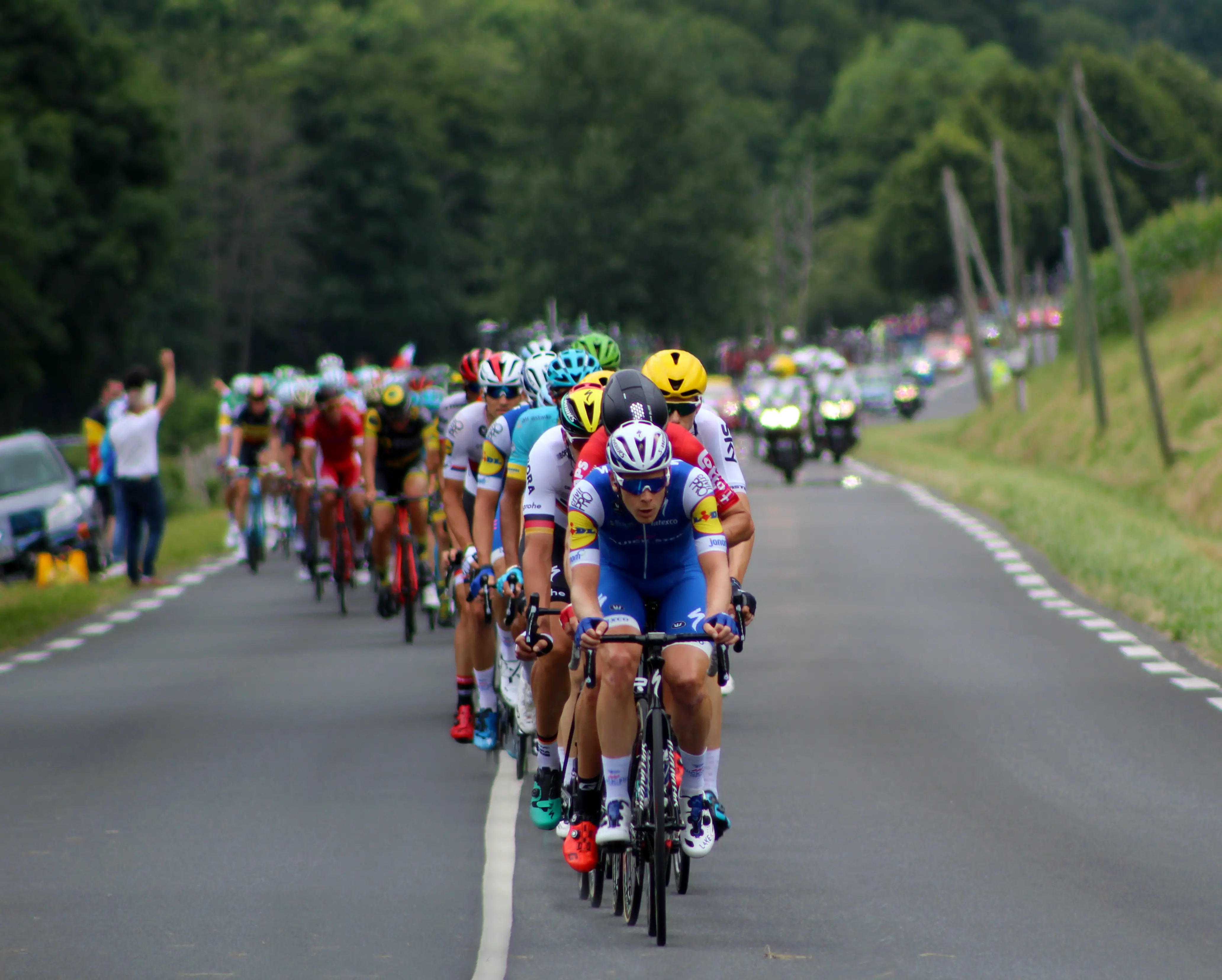
Photo by robwingate on Unsplash
Cycling Accessories and Gear
Title: Cycling Accessories and Gear: Enhance Your Riding Experience
Introduction: Cycling is a fantastic way to explore the outdoors, stay fit, and reduce your carbon footprint. Whether you are a beginner or a seasoned cyclist looking to get back in the saddle, the right cycling accessories and gear can make your rides more enjoyable and efficient. In this guide, we will explore various cycling accessories and gear that can enhance your riding experience, such as cycling clothing, shoes, hydration systems, bike computers, and tools.
1. Cycling Clothing
- a. Base layers: Moisture-wicking base layers can help to keep you dry and comfortable during your ride. Look for materials like polypropylene or merino wool that is designed to wick sweat away from your skin.
- b. Jerseys: Cycling jerseys are designed to be lightweight, breathable, and wick away sweat. Look for jerseys with rear pockets to store small essentials like your phone, keys, or snacks.
- c. Shorts and Tights: Padded cycling shorts and tights provide comfort during longer rides by reducing friction and pressure on your sit bones. Choose between shorts for warmer weather and tights for cooler rides.
- d. Outerwear: Windbreakers, rain jackets, and vests can protect you from the elements during your ride. Look for features like water resistance, breathability, and reflectivity for added safety.
- e. Gloves: Cycling gloves offer padding to reduce pressure on your hands, improve grip, and protect your hands in case of a fall.
- f. Socks: Opt for moisture-wicking cycling socks to keep your feet dry and comfortable during your ride.
- g. Headwear: Skullcaps, headbands, or helmet liners can provide added comfort and help wick sweat away from your brow.
2. Cycling Shoes
- a. Road shoes: These shoes have a stiff sole for efficient power transfer and feature cleats that attach to clipless pedals. Road shoes are lightweight and breathable.
- b. Mountain bike shoes: These shoes have a more rugged sole for better grip on off-road surfaces and are typically more durable than road shoes.
- c. Casual shoes: Some cyclists prefer casual cycling shoes with a more relaxed fit and versatile styling for both on and off the bike.
3. Hydration Systems
- a. Water bottles: Most bikes have bottle cages for easy access to water while riding. Insulated bottles can help to keep your drinks cool on hot days.
- b. Hydration packs: A hydration pack is a backpack with an integrated hydration reservoir, allowing you to drink water through a hose while you ride. These packs can also store additional essentials like tools, food, and extra clothing.
4. Bike Computers and Navigation
- a. Bike computers: These small devices attach to your handlebars and provide essential ride information such as speed, distance, time, and even heart rate or power output. Some models also feature GPS navigation.
- b. Smartphone mounts: Mounting your smartphone on your handlebars allows you to use apps for navigation, tracking, and communication during your ride.
5. Essential Tools and Maintenance Gear
- a. Multi-tools: A compact multi-tool can cover most basic repairs and adjustments you might need to make during your ride.
- b. Tire levers and patch kits: Carry these essentials to fix a flat tire and ensure you can continue on your ride.
- c. Pump or CO2 inflator: A small, portable pump or CO2 inflator is crucial for reinflating your tires after a repair.
- d. Spare tubes: Always carry a spare tube that fits your bike’s tire size.
- e. Chain lube: Regularly lubricating your bike chain can improve performance and extend the life of your drivetrain.
Conclusion: Investing in the right cycling accessories and gear can help you enhance your riding experience and motivate you to get back on your bike more often. By staying comfortable, safe, and prepared, you can ensure every ride is enjoyable and successful.
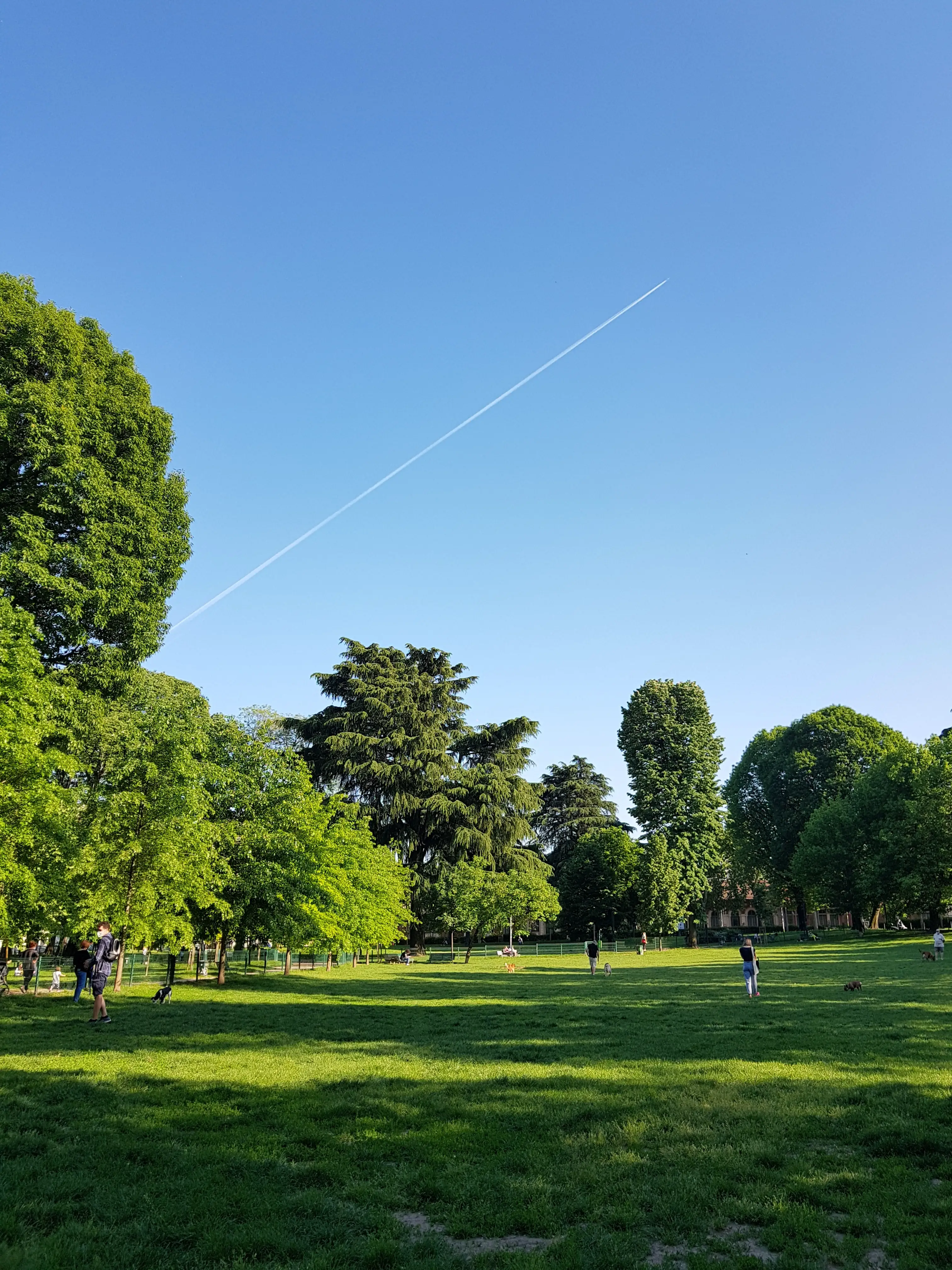
Photo by martinscardoso_unsplash on Unsplash
Route Planning and Navigation
Title: Route Planning and Navigation for Cycling Enthusiasts
Introduction:
Cycling is an enjoyable and challenging hobby that offers numerous benefits, such as improved physical fitness, mental well-being, and reduced environmental impact. As a cycling enthusiast, learning how to plan and navigate cycling routes will enrich your experience and open up new challenges. This guide will walk you step-by-step through the process of route planning and navigation, using helpful tools and resources to maximize your cycling journey.
1. Determine your goals and preferences:
Before you begin planning, consider your goals for your cycling trips. Are you aiming for a rigorous workout, a leisurely ride, or perhaps a balance of both? Do you prefer flat terrain, hills, or a combination? Would you like to include sights like parks, landmarks, or points of interest? Knowing what you want to achieve will guide your route planning process.
2. Research popular cycling routes in your area:
To get ideas for your route, start by researching popular cycling trails, bike routes, and suggested rides in your vicinity. Local cycling clubs, bike shops, and online forums are excellent places to find recommendations. Websites like Rails-to-Trails Conservancy (www.railstotrails.org) and Bike Map (www.bikemap.net) can help you discover curated routes in your area.
3. Use mapping tools and apps:
Mapping tools and apps specifically designed for cycling make it easy to plan your route and ensure you stay on track. Some popular options include:
- Google Maps: Google Maps offers a dedicated bicycle layer to help you find bike lanes, trails, and safe roads for cycling. To access this feature, click on the “Menu” icon in the search box and select “Biking” from the list of options.
- Strava: Strava is a dedicated cycling app that allows you to create, share, and discover routes based on user-generated data. You can also track your progress, view your ride history, and compete with other cyclists in virtual challenges.
- Komoot: Komoot is an all-in-one route planning and navigation app that offers turn-by-turn voice instructions and offline maps for seamless riding. You can input your cycling goals, and the app will generate personalized route suggestions based on your preferences.
4. Plan your route:
Using your research and chosen mapping tool, begin crafting your route. Consider factors such as distance, difficulty, elevation, surface conditions, and points of interest along the way. Remember to incorporate rest stops and possible detours in case of unforeseen circumstances.
5. Export your route and share with friends:
Once you have finalized your route, export it as a GPX or TCX file, which can be uploaded to most cycling GPS devices or smartphone apps. Sharing your route with friends or family, especially if you’re riding alone, can be helpful in case of emergency and also adds a level of accountability.
6. Prepare your navigation tools:
Before heading out, make sure you have the necessary tools to navigate your route. This may include a GPS device, smartphone (with apps like Strava or Komoot installed), or printed maps and cue sheets if you prefer a low-tech approach. Familiarize yourself with your chosen navigation method and pack any necessary accessories like chargers and power banks.
7. Safety first:
Prepare yourself by wearing the appropriate safety gear, such as a helmet, reflective clothing, and lights. Always abide by local traffic laws and be aware of your surroundings. Carry a basic repair kit and learn how to address common issues, like fixing a flat tire, to help ensure a safer ride.
Conclusion:
By following these steps, you will be well on your way to planning and navigating new and exciting cycling routes. Embrace the thrill of discovery and challenge yourself with diverse rides that will help you grow as a cyclist and experience your local area from a fresh perspective. Happy cycling!”

Cycling Groups and Communities
Title: Connecting with Cycling Groups and Communities
Introduction:
Cycling is not only a fun way to stay fit, but also an excellent way to make friends and connect with like-minded individuals. Joining local cycling groups and online communities is a fantastic way to share experiences, advice, and support, as well as participate in organized rides and events. In this guide, we’ll show you how to find and connect with cycling groups and communities in your area, further enhancing your cycling journey.
1. Research local cycling clubs and groups:
a. Start by checking out your city or town’s website for information about local cycling organizations and clubs.
b. Visit local bike shops and ask the staff if they know of any cycling groups in the area.
c. Use online resources such as Meetup.com or Facebook to search for cycling groups based on your location and interests.
d. Refer to local outdoor or cycling-related magazines for event listings or group advertisements.
2. Attend a group ride or meeting:
a. Once you have found a group that aligns with your interests and skill level, attend a scheduled ride or meeting.
b. Introduce yourself to the group leader and other members, expressing your interest in joining.
c. Be prepared to listen and observe the group etiquette, such as following traffic rules, riding in a single file, and signaling turns.
3. Join online cycling communities:
a. Look for online forums or discussion boards dedicated to cycling topics, such as BikeForums.net or Reddit’s r/bicycling subreddit.
b. Participate in discussions, ask questions, and share your experiences to engage in these online communities actively.
c. Connect with other cyclists via social media platforms such as Strava or Instagram by following and engaging with fellow enthusiasts.
4. Participate in organized rides and events:
a. Discover and register for upcoming local cycling events, such as charity rides, sportives, or races.
b. Regularly check your chosen group or club’s calendar to stay up to date with their latest activities.
c. Encourage your new cycling friends to join you in participating in these events, fostering camaraderie and motivation.
5. Volunteer and give back to the community:
a. Offer to lead or support local group rides, share your knowledge with new members or help organize events.
b. Get involved in cycling advocacy, such as joining efforts to improve local cycling infrastructure or promote cycling initiatives.
c. Support local bike shops, businesses, and manufacturers who cater to the cycling community.
Conclusion:
Connecting with local cycling groups and online communities can significantly enrich your overall cycling experience. By following these steps, you will become an active and contributing member of your local cycling community, leading to enduring friendships, a wealth of shared knowledge, and countless memorable riding experiences. Now, it’s time to get out there and start pedaling!
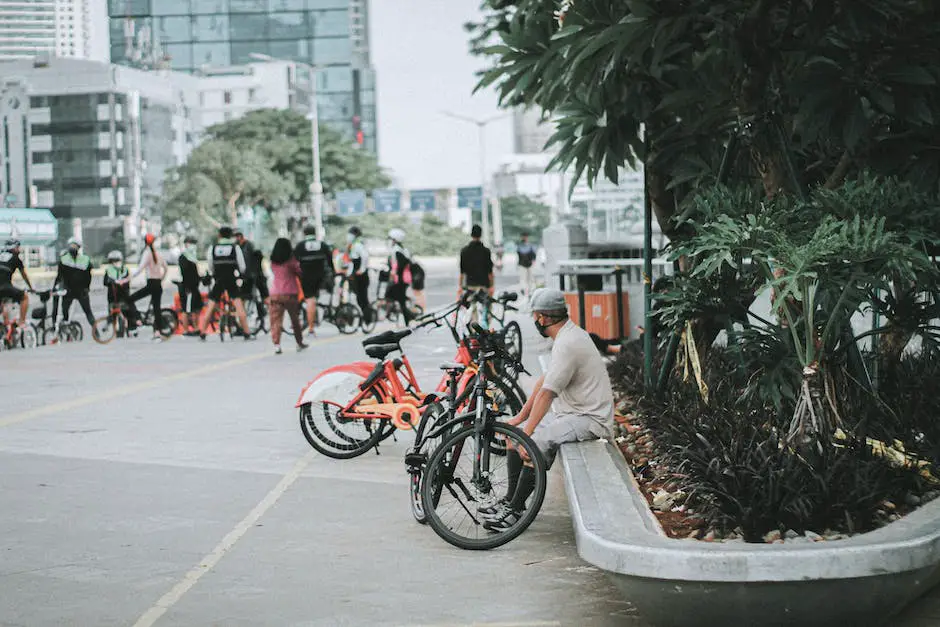
Goal Setting and Tracking Progress
Title: Goal Setting and Tracking Progress for Cycling Enthusiasts
Introduction:
Whether you are new to cycling or looking to enhance your skills, setting personal goals and tracking your progress is essential to your growth. This guide provides instructions on establishing cycling goals, implementing strategies to achieve them, and monitoring your progress using various tools and apps.
Step 1: Set Your Cycling Goals
- Reflect on personal interests and motivations: Determine what you want to achieve with cycling, whether it’s for fitness, socializing, competition, or exploring new areas.
- Consider SMART goals: Set goals that are Specific, Measurable, Achievable, Relevant, and Time-bound.
- Examples of cycling goals:
- Increase overall distance: Aim to cycle a specific total distance over a set time.
- Improve cycling speed: Set a goal to increase your average cycling speed by a certain amount.
- Participate in cycling events: Choose local, regional, or national cycling events to participate in and train for.
- Improve climbing skills: Identify hills or mountain trails to practice and improve your climbing technique.
Step 2: Plan Your Cycling Strategy
- Create a training schedule: Plan weekly or monthly cycling routines that incorporate long rides, short rides, speed drills, climbing practice, and rest days.
- Establish milestones: Break down your overall goal into smaller, achievable milestones to track your progress and keep yourself motivated.
- Consider seeking guidance: Join a local cycling club, find a mentor, or sign up for coaching sessions for expert advice and support.
- Cross-train: Engage in other physical activities, such as strength training or yoga, to improve your overall fitness and flexibility needed for cycling.
Step 3: Track Your Cycling Progress
- Cycling journals: Write down your daily or weekly cycling activities, distance, speed, time, and other relevant details. Note your thoughts, feelings, and any challenges or accomplishments.
- Mobile apps: Utilize cycling and fitness apps, such as Strava, MapMyRide, or MyFitnessPal, to track your cycling routes, distance, speed, and calories burned. These apps often offer a convenient way to measure your progress over time.
- Wearable fitness devices: Consider using a GPS smartwatch or heart rate monitor to track your cycling metrics and effort during each ride.
- Online cycling communities: Join forums, Facebook groups, or other online spaces where you can discuss your progress, share your achievements, and seek advice from other cycling enthusiasts.
Step 4: Reevaluate and Adjust Your Goals
- Regularly review your progress: Analyze your tracked data to determine if you are on track or need to adjust your goals and strategies.
- Be flexible and adaptable: Recognize that setbacks and challenges may arise and adjust your goals as needed.
- Celebrate small successes: Acknowledge reaching milestones or overcoming challenges, and use these accomplishments to stay motivated.
Conclusion: Ultimately, goal-setting and tracking progress are crucial components of your success as a cycling enthusiast. By following these steps, you can refine your skills, achieve personal milestones, and maintain the motivation needed to continue pursuing your passion for cycling.

Overall, cycling is a fantastic way to stay active, challenge yourself, and connect with a supportive community of fellow enthusiasts. By investing time and effort into learning about the many facets of cycling, you’ll equip yourself with the knowledge and skills required to make the most of this rewarding hobby. Whether you’re looking to conquer new terrain, improve your fitness and stamina, or simply explore the great outdoors on two wheels, the world of cycling offers endless opportunities for adventure and self-discovery. Happy pedaling!
